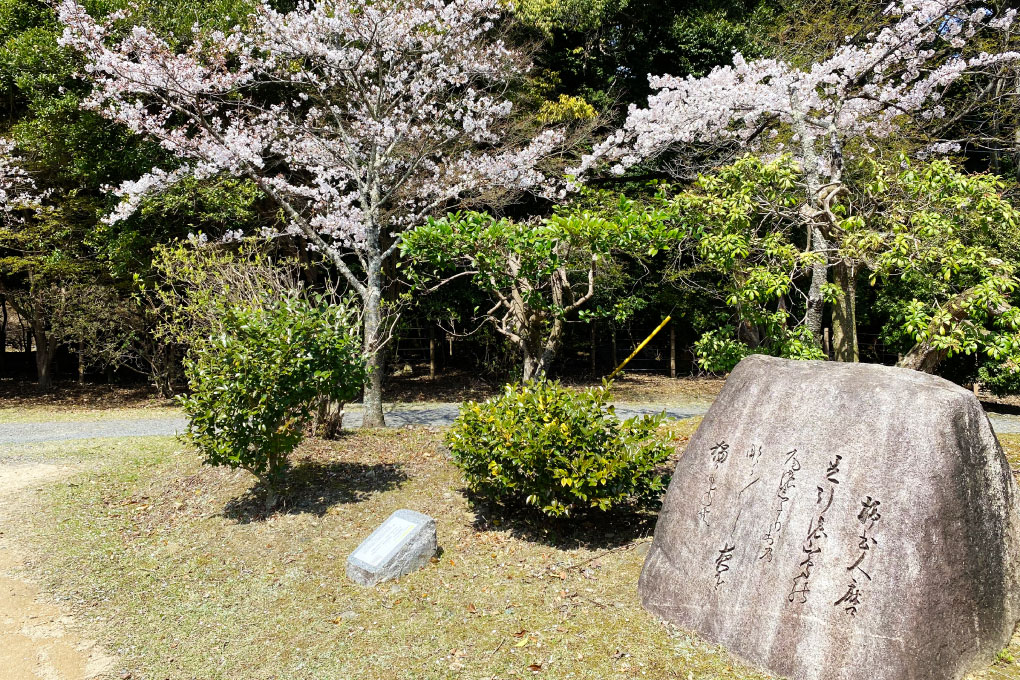Hyakunin Isshu is an anthology of 100 poems by 100 poets. It was collected here in Saga Arashiyama 800 years ago by Fujiwara no Teika, who carefully selected each of the short waka poems. A permanent exhibition at Saga Arashiyama Museum of Art and Culture conveys the charm, and tells the history, of Hyakunin Isshu.
Explore Hyakunin Isshu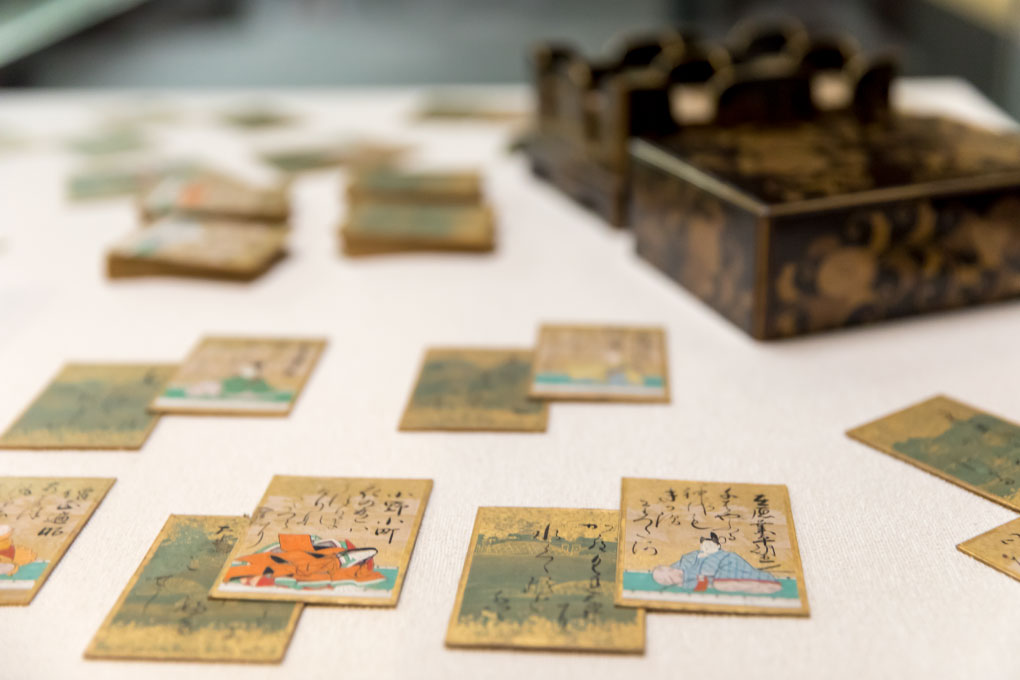
During the 13th century, one hundred poems, each by a different poet were set in an anthology by poet Fujiwara no Teika who worked on Mt. Ogura.
A few hundred years later, the poems became the basis for a popular game: upon hearing the first words of each waka read from karuta [cards] taken one after another from a shuffled stack, competing players rush to indicate, from an initial array of 100 illustrated karuta, the card printed with the poem.
The hundred selected poems were chosen from old and new anthologies that had been compiled to please the imperial court.
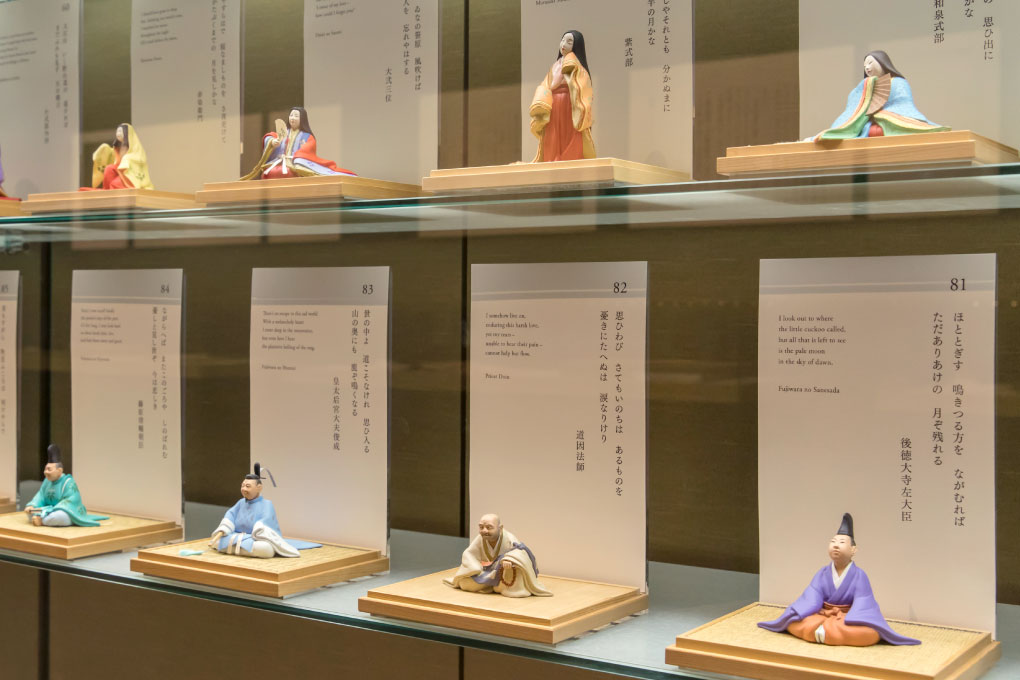
A worthy heir to a clan of poets, Fujiwara no Teika, master of waka poetry and literary critic, had a middle-ranking position at the 13th century court in Kyoto.
Besides compiling Hyakunin Isshu, he was also involved with editing and contributing to other imperial anthologies. In fact, his 465 poems included in the major anthologies was the greatest number by a single author. He left a legacy of more than 4,000 poems, most of which were included in his handwritten, sole-authored anthology Shuigusō, a National Treasure of Japan. His diary, known as Meigetsuki, meticulously kept for more than half a century from age 18 to 74, is highly valued as an artifact and historical record.
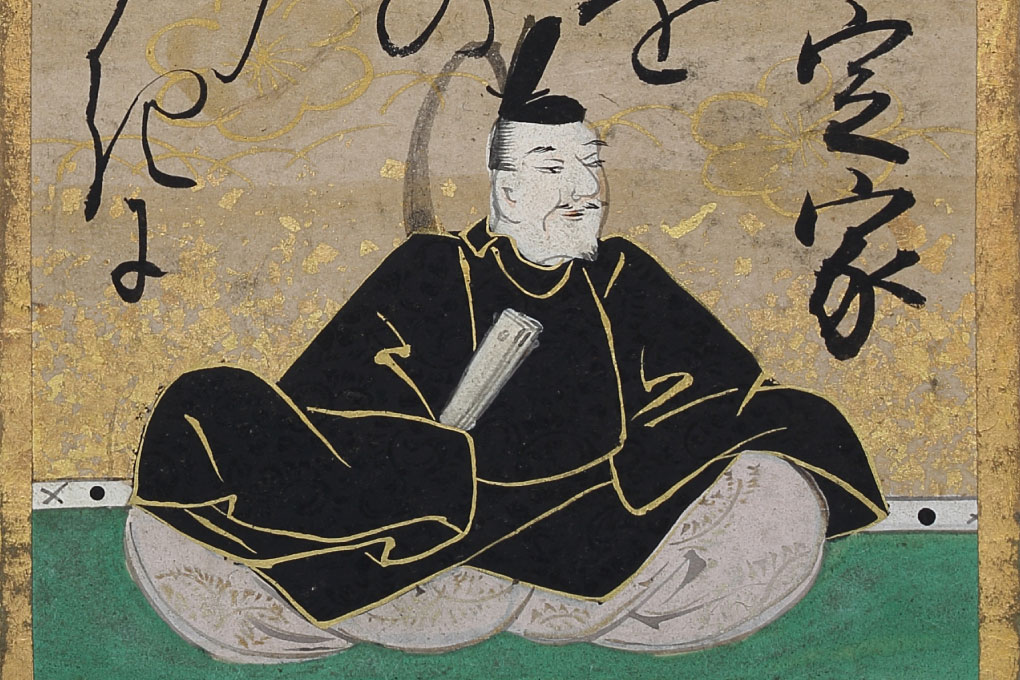
Karuta is derived from the Portuguese word for playing cards. They were introduced to Japan by the sailors who brought Catholic missionaries. Court ladies at this time played a game in which decorated bivalve shells were matched. This concept seems to have given rise to karuta.
Hyakunin Isshu sets of karuta appeared early in the Edo Period (started 1603). Crafted sets were included as dowry items for the daughters of aristocrats and feudal lords. After a while, cheap woodblock-printed karuta became available and the game gained popularity among ordinary people.
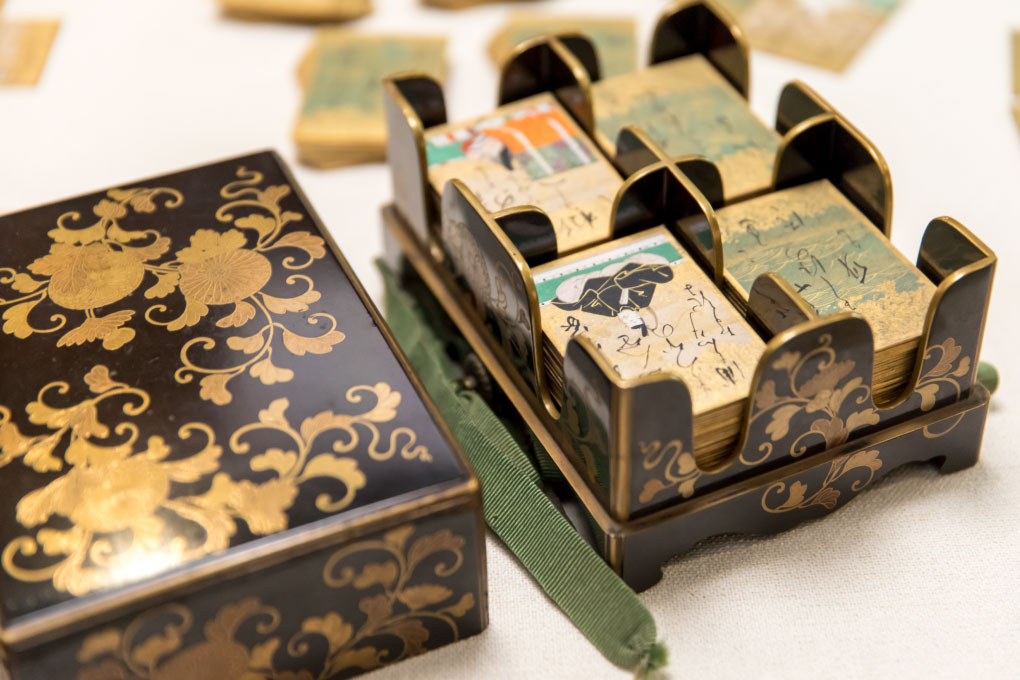
Near Saga Arashiyama Museum of Art and Culture, in five separate public parks or spaces, 100 monumental stones, each engraved with one of the poems, have been placed.
This was done in 2007 to commemorate the 120th anniversary of the foundation of the Kyoto Chamber of Commerce and Industry.
